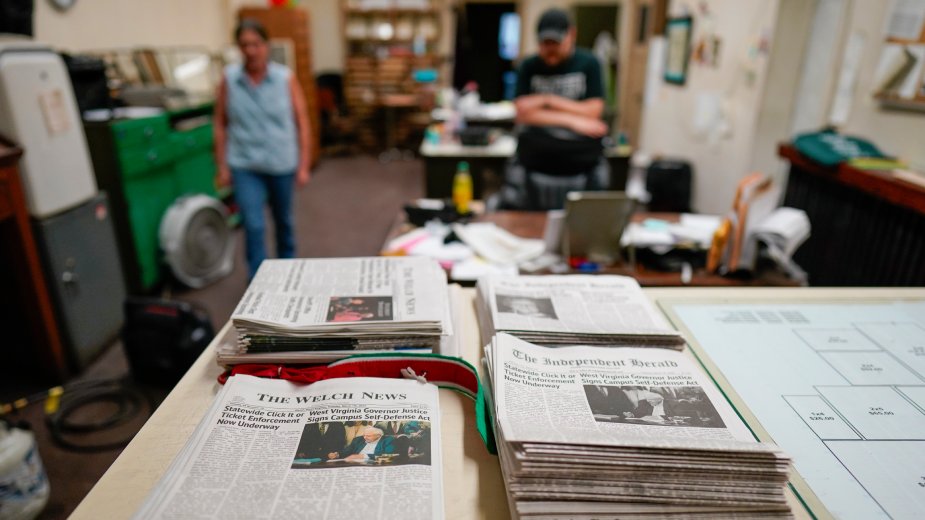Laws Limit Sources of Capital for Medical Cannabis Industry
YOUNGSTOWN, Ohio – The medical marijuana industry has become a billion-dollar business in Ohio.
What hasn’t kept pace with the market, though, is the ability of the industry to access capital from conventional sources such as federally regulated banks – a gray area from which many institutions shy away.
Instead, most of Ohio’s medical cannabis companies rely on private equity, state-chartered lenders such as credit unions, or capital groups that lend money well above market rates to finance their operations.
“I’ve been doing this about 12 years now,” says Brian Kessler, chairman of Riviera Creek LLC, a medical marijuana cultivator here. Kessler is also a principal at SBL Financial Capital, which invests in the cannabis industry.
“When I started, there was no access to capital in this space except equity,” he recalls. “It was the only way to raise money.”
That’s because federal law considers cannabis an illegal substance. However, 37 states have legalized marijuana use for either medicinal or recreational purposes since the mid-1990s.
California was the first state to legalize medical marijuana in 1996 and followed in 2016 with laws allowing its recreational use.
Kessler says his firm was among the first to bring investment money into the cannabis market after experiencing the chaotic, cash-only environment in California. “Over time, it started to transition,” he says.
Equity groups serving the industry — prohibited from listings on the U.S. stock exchange – instead found refuge on the Canadian market, where a commercial sector in medical marijuana had been recognized since 2013.
Today, U.S. companies such as Canopy and Green Thumb Industries trade on the Canadian exchange, which enables shares to be traded over the counter, Kessler says.
“These are companies that operate in multiple states in both medicinal and recreational marijuana,” adds Daniel Kessler, president of Riviera Creek.
Once these firms went public, it led to the creation of private funding sources here in the United States, Brian Kessler says. “They were created to lend money to the cannabis industry at higher-than-market interest,” he says. “It was the first source of capital besides equity that started to show up.”
Private lending groups such as Dama Investments and Chicago Atlantic found a solid business in lending capital to startup cannabis ventures at rates between 14% and 18%, Kessler says.
Among the financing mechanisms were real estate leasebacks, he says, where a group would buy the real estate assets of the venture in return for cash infusion. Then, the cannabis company leases the building that, over time, pays the investment group a much higher return.
“What’s amazing is that 99% of those worked,” Kessler says. “There were a lot of those who weren’t making money at first and promised within the next year to pay back seven times the value of their buildings. Most of the time, the money was covered.”
The Kesslers say access to this capital is critical for startups in their early stages. Their next step is to secure financing to stay in business.
In Ohio, the first to enter the cannabis lending market were state-chartered credit unions, Daniel Kessler says. “You need to go through all kinds of compliance,” he says. “But they were the first.”
Riviera Creek obtained a Level 1 cultivation license for medical marijuana in 2017 through the Ohio Department of Commerce. The state had legalized its use for medicinal purposes a year earlier.
While it’s possible to obtain early financing from traditional lending institutions, once the business comes into contact with cannabis, then that source of funding is shut off.
Regardless, such a business needed an institution where it could create a standard account to pay vendors and other expenses. “Banks aren’t touching it,” Daniel Kessler says
Instead, Riviera Creek found opportunities with Wright-Patt Credit Union Inc. in Dayton, Brian Kessler says. “It was the first bank in Ohio to accept cannabis money.”
The cost of doing business remained relatively high compared to traditional business accounts, he adds. “Wright Patt was the most attractive.”
While the Kesslers decline to say how much money Riviera Creek has raised, the business recently announced an expansion at its Youngstown site.
Meanwhile, the cannabis industry has exploded both nationwide and across the state of Ohio.
According to estimates from MJBiz, a group that tracks the medical and recreational marijuana industry, cannabis sales could reach $33 billion by the end of this year. By 2026, that number could hit more than $52 billion annually.
In 2021, medical cannabis sales increased 34% nationwide from the previous year, according to data. Recreational sales fared even better, posting a 43% gain from 2020.
By 2026, MJBiz projects that medical marijuana sales should reach $15.6 billion per year, while recreational sales could realize $37 billion worth of business.
In Ohio, total medical marijuana sales have reached nearly $1 billion since commercial distribution began in January 2019, Sheryl Maxfield, director of the Ohio Department of Commerce, told The Business Journal Sept. 12. “We’re at $982 million in sales,” she said. “We’ll hit a billion either this month or next month.”
Maxfield says the state has approved 37 Level 1 and Level 2 cultivator licenses and issued 58 certificates of operation to dispensaries. As of July 31, the state reports the program has received 546,750 recommendations and has 293,579 registered patients.
She says the program has exceeded the state’s expectations. “I don’t think anybody thought that the demand would be as high as it’s been,” Maxfield says.
Ohio’s billion-dollar cannabis program has also helped loosen credit markets for medical marijuana companies such as Riviera Creek, Brian Kessler says.
Rates are more competitive today, he says, because many in the lending markets have ascertained that the industry isn’t as risky as initially thought. Fees and the cost of funds remain higher than conventional business loans – between 10% and 12% — but lenders have become more amenable to baking with cannabis ventures.
CF Bank, an FDIC-backed institution in Worthington, Ohio, for example, has taken on Riviera Creek as a customer, Kessler says.
“We were CF Bank’s first client in cannabis,” he says. “Now, we have a traditional banking relationship.”
Many of the larger banks have steered away from this market because of the intense compliance rules and paperwork required to take on customers in the cannabis industry, Kessler continues. “Most of the bigger banks don’t want to put forth the effort.”
There is also tremendous pressure on Congress to address making marijuana legal at the federal level, along with adopting legislation that would allow banks to lend more freely to the industry, Kessler says.
Ohio, for example, deposits its tax revenue with private federally chartered banks, Kessler notes. Yet some of this tax revenue money is from the sale of cannabis.
While these banks won’t do business with the medical marijuana industry, “they have our tax dollars, which is cannabis-generated money,” Kessler says.
This double standard presents a “problematic” issue, as Kessler labels it. “There are billions of dollars in sales revenue and tax dollars coming off of it,” he says. “If they can’t get a cannabis law passed, they know they’ll have to do something about banking.”
Copyright 2024 The Business Journal, Youngstown, Ohio.


